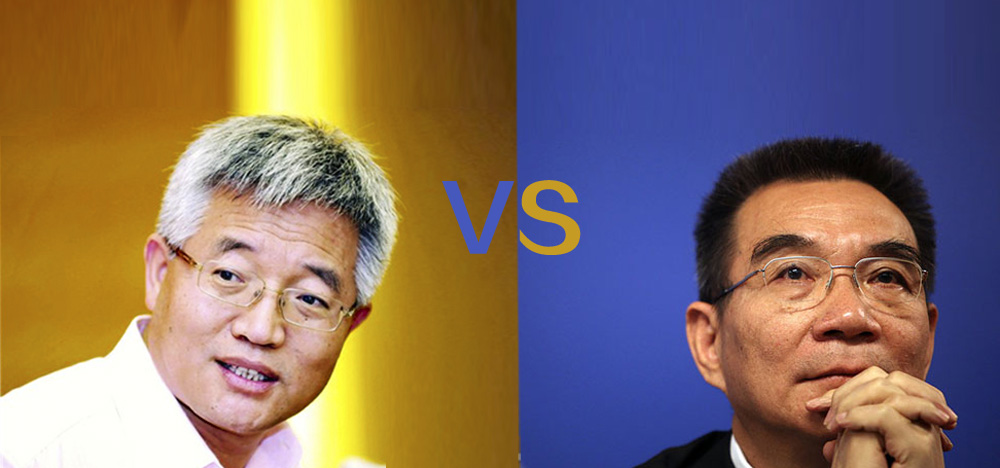第七届中国经济学年会论文专场综述:劳动经济学Ⅲ
- A-A+
- 第七届中国经济学年会 2008-01-02 09:13:54 来源: 作者:李晓蕾 0
From 2-4pm, Dec.16, the section of “labor economicsIII” was held in the room C-106. There are four papers written in English discussed in this section.
The first article is Effects of Education on Wage Inequality in Urban China
The writer is LI, Xiaohua, China Center for Economic Research, Peking University. In this article, firstly, she talked about China's transition and urban labor market reform. She mentioned from planned to market-oriented, China witnessed one of the fastest increases in income inequality in the world. Then she analyzed the trend of wage inequality during transition, and proposed a question whether different levels of education play different roles in inequality-increasing trend. Secondly, she used data to show the effects of education on wage inequality, including quantity Effect, quality Effect and price effect. Thirdly, she run OLS regression and conduct the quantile-JMP decompositon, counterfactual analysis to get the conclusion below: wage Inequality has risen in urban China during 1988-2003. The period of most rapid inequality increase was 1992 to 1994; There are dramatic increase in the returns to edu and systematic differences by gender; The rise of male and female wage dispersion during 1988-2003 is almost entirely accounted by prices rather than quantities; For male workers, edu helps decrease inequality during 1988-1997 while increasing wage inequality during 1997-2003; For female workers, edu increase wage inequality during 1988-1997, but it has different effects on the lower and upper-part of female wage distribution during 1997-2003 which decrease inequlity among high-wage workers while increasing inequlity among low-wage workers; Education exerted more influences on the welfare of women than men during the transition period; The overall effects of college and above education category on the growth of wage inequality is the most pronounced one.
Comments: The special phenomenon in year1992 to 1994 should be explored deeply. And when price changed the inequality will increase.
Questions: One: Should the definition of wage be changed into labor earning? The answer is yes. Two: Is the data available? The answer is: It can be bought from the national department.
The second article is Gender Earnings Gap in Urban China
The writers are Junsen Zhang, Chinese University of Hong Kong, Jun Han, University of Hong Kong, Pak-Wai Liu, Chinese University of Hong Kong and Yaohui Zhao, Beijing University. Firstly, Jun Han said that the purpose of this study is to analyze changes in the gender earnings gap in urban China over the period 1988–2004 and find out the reasons for the changes in gender wage gap. Then he talked about China's Economic Reform and Institutional Features, following by Data Description. Secondly, he showed the Overview of the Gender Earnings Difference, and get the results that the changes in observed characteristics contribute to a large reduction in the gender earnings gap. A major driving force behind this effect is the narrowing of the gender gap in education over years. The changes in prices of observed characteristics over the years, especially rising returns to education, increase the gender earnings gap. Women position in the residual earnings distribution worsens, causing an increase in the gender earnings gap. The increase in discrimination may be due to the institutional changes in the labor market decentralization. The rising autonomy of enterprises may have induced managers to practise discrimination against women in the wage setting. At last he get the conclusions that The mean female/male earnings ratio declined by about 10.1 percentage points from 86.3% in 1988 to 76.2% in 2004. The main contributors to this diverging trend are rapid increases in returns to both observed and unobserved skills that weigh the skill deficit of women more heavily. The lower earnings group is associated with a larger divergence of the gender earnings gap, while the higher earnings group is associated with a smaller divergence of the gender earnings gap.
Comments: The utility of one dollor to different person is different .So to force everyone to put money into bank means redistribution.
Questions: Why the parameter is estimated as 0.5? The answer is during the investment the husbands and wives identified this number.
The third article is Son Preference, One-Child Policy, and Sex Ratios imbalance in China
The writer is Yi JunJian, the Chinese University of Hong Kong. Firstly he pointed out the Problem of Sex Ratios Imbalance, and give out the Suggested Explanations. Then he said the Standpoint of this Part is One-Child Policy. Secondly he use two Empirical Strategy: Differences-in-differences (DD) estimator and Regression adjusted DD estimator, also with Justification of the DD Estimator. Still he used data description method. Thirdly he got the conclusion: The estimated effect on the probability of being a boy is as large as 1.01 percentage points, which implies that the one-child policy has causally increased the sex ratio at birth by 4.4, and that 93.62% of the increase of the sex ratio for the Han Chinese in the entire 1980s can be accounted by the one-child policy; The estimated treatment effect is mainly driven by rural residents, and the second and higher birth parities; The estimated treatment effect is not likely to be confounded with the rural household responsibility system reform, the spread of modern gender selection technologies, and the epidemic of hepatitis B. There are two implications: The selection of the fetus’ identification technique is just the individual’s constrained optimal behavior under the one-child policy regime. The prohibition of the illegal identification of gender by ultrasound B or other apparatus may be inefficient to a large extent in the existing one-child policy regime.
The forth article is Mortality Heterogeneity and the Distributional Consequences of Mandatory Annuitization
The writers are Guan Gong, Shanghai University and Finance and Economics and Anthony Webb, Boston College. Firstly, Guan Gong presented the motivation of the study is the retirement decumulation problem, and Annuities solve the retirement decumulation problem. Then he showed what determine the value of annuitization, including money and utility based value. Secondly he point out the Methodology used. They assume that people think of themselves as aging faster or slower than the average and survival probability is based on, but not necessarily equal to, the true underlying beliefs. Then they use Bayesian updating, based on life tables and subsequent mortality, to recover subjective annual mortality risk from estimates of probabilities of surviving to 75. At last they got the conclusion is that significant minorities of some groups may correctly perceive themselves as being net losers under mandatory annuitization even when the average household in the group perceives itself as being a net gainer.
天津大学马寅初经济学院2022年预聘教
天津大学马寅初经济学院是以北洋大学(天津大学前身)毕业的马寅初学长命名的一所与国际接轨、高起点的...北京大学国家发展研究院招聘事业编制
北京大学国家发展研究院招聘事业编制研究员2名。北大汇丰智库研究实习岗位招聘启事
北大汇丰智库将于2020年起招聘实习研究专员若干名。
-
税收立法攻坚提速,增值税、消费税等立法密集启幕
52人看过
-
周其仁:数目字的城乡差别
42人看过
-
35岁获得终身教职,他是如何做到的?
672人看过
-
姚洋:呼吁推出全国性房产税方案
70人看过
-
货币政策与经济增长丨访诺奖得主克里斯托弗•西姆斯
1046人看过




